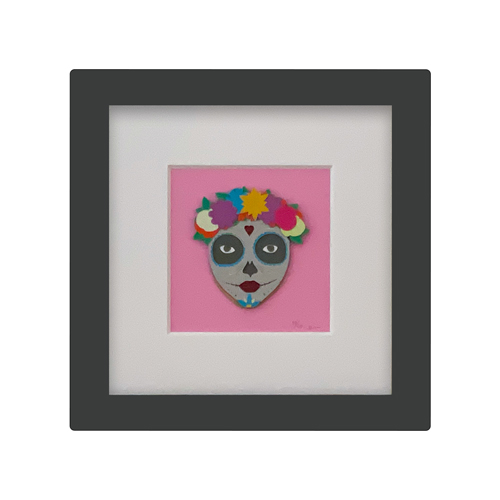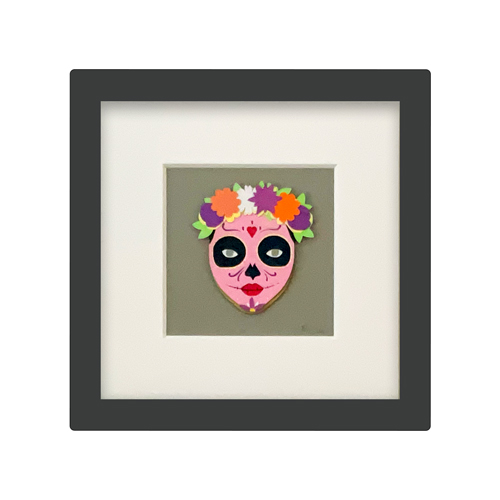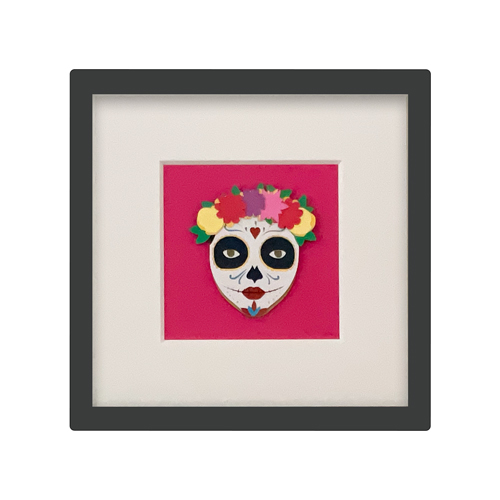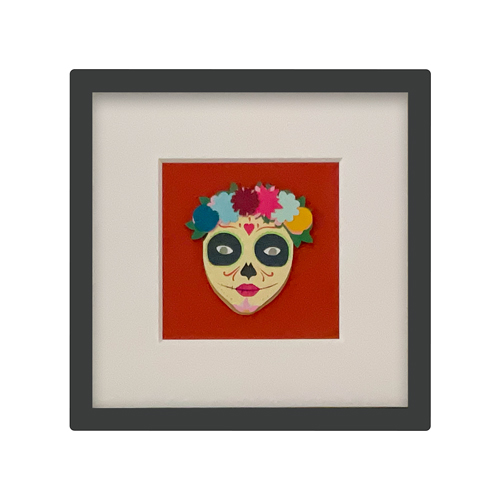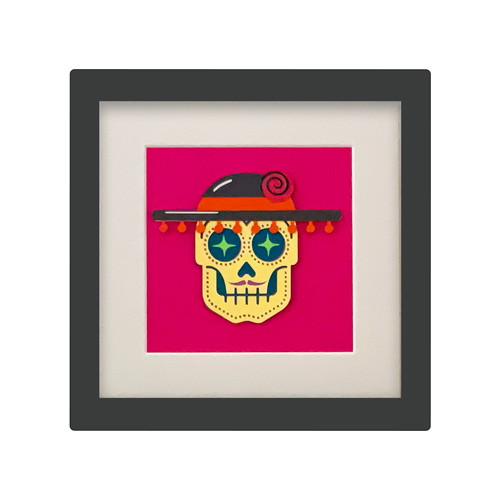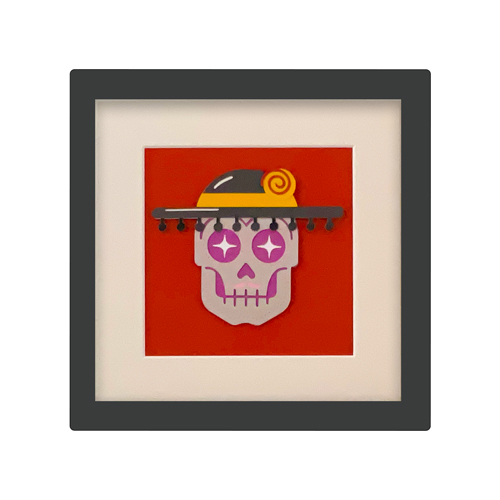Dia de los Muertos – Day of the Dead –
“In Mexico, death rites date from pre-Hispanic rituals represented in murals, painted pottery, monuments, and artifacts, which shows how the Day of the Dead has its origins in the rituals practiced by the indigenous peoples of the Americas. Its precedents date to more than 3000 years ago when the Olmecs and subsequent Toltecs, Mixtecs, Zapotecs, Maya, and Aztecs honored death.” — The Mexican Museum
Inspired by traditional Mexican celebrations, I decided to create a limited run of calaveras using dimensional paper layers. These guys spent some time in historic Pt Richmond, CA – Mom N Pop Art Shop
NOTE – these are unframed, mats only.
Interested in other cut paper art pieces? Click here.
The Vibrant Significance of Día de los Muertos and its Art
Día de los Muertos, or Day of the Dead, is far more than a somber remembrance; it is a vibrant and profound celebration of life, death, and the enduring connection between the living and the departed.
Celebrated primarily in Mexico and by people of Mexican heritage around the world, this multi-day holiday, typically observed on November 1st and 2nd, is a rich tapestry woven with indigenous beliefs, Spanish Catholic traditions, and a unique artistic expression that makes it unlike any other commemoration of the deceased.
The significance of Día de los Muertos lies in its ability to transform mourning into a joyful reunion, fostering a sense of continuity and familial connection that transcends the veil of death.
At its core, Día de los Muertos is rooted in the ancient beliefs of Mesoamerican civilizations like the Aztecs, Mayans, and Toltecs, who viewed death not as an end but as a natural part of the life cycle. They believed that the spirits of the deceased returned to visit their living relatives during a specific time of year. When the Spanish conquistadors arrived in the 16th century, they attempted to Christianize these indigenous traditions, merging them with the Catholic observances of All Saints’ Day and All Souls’ Day. This syncretism gave rise to the modern Día de los Muertos, a holiday that honors the dead with both reverence and festivity.
The central tenet of Día de los Muertos is the belief that the souls of the departed return home to be with their families. To welcome them, families create elaborate altars, or ofrendas, adorned with vibrant marigold flowers (cempasúchil), whose bright colors and potent scent are believed to guide the spirits. Candles are lit to illuminate their way, and the favorite foods and drinks of the deceased are offered as a welcoming feast.
Photographs of the departed, personal belongings, and even toys for deceased children are placed on the altar, creating a personal and intimate space for remembrance. The inclusion of incense, often copal, purifies the space and elevates prayers. These altars are not merely decorative; they are tangible expressions of love, memory, and the enduring bond that death cannot sever.
The art that surrounds Día de los Muertos is as integral to the celebration as the altars themselves. It is a unique and recognizable aesthetic that blends the macabre with the whimsical, using symbols of death in a way that celebrates life. The most iconic artistic representation is the calavera, or skull.
Far from being morbid, these skulls are often brightly colored and intricately decorated with flowers, patterns, and even the names of the deceased. Sugar skulls, in particular, are a ubiquitous symbol, often given as gifts and placed on altars. Their sweetness reminds us of the sweetness of life, while their form acknowledges the inevitability of death.
Another prominent figure in Día de los Muertos art is La Catrina, a skeletal woman elegantly dressed in the fashion of the early 20th century. Originally a satirical cartoon by José Guadalupe Posada, La Catrina has become a powerful symbol of the holiday, representing the idea that death is a great equalizer, coming for everyone regardless of their social status or wealth. Her image is found everywhere during the celebration, from elaborate costumes and makeup to paintings and sculptures.
Papel picado, intricately cut tissue paper banners, adds another layer of artistic expression to Día de los Muertos. These delicate and colorful decorations flutter in the breeze, symbolizing the fragility of life and the joyous spirit of the celebration. They often feature images of skeletons, flowers, and other motifs associated with the holiday.
Beyond these iconic symbols, the art of Día de los Muertos extends to elaborate sand tapestries, vibrant murals, and handcrafted folk art. Each piece contributes to the overall atmosphere of remembrance and celebration, transforming homes and public spaces into colorful and meaningful tributes to the departed. This art is not just for display; it is an active part of the ritual, a way for the living to engage with the memory of their loved ones and to express their enduring connection.
In conclusion, the significance of Día de los Muertos lies in its profound ability to honor the deceased in a way that embraces the cyclical nature of life and death. It is a time for families to come together, to share memories, and to celebrate the lives of those who have passed. The art that permeates this holiday, from the whimsical calaveras to the elegant La Catrina and the delicate papel picado, serves not only as decoration but as a powerful visual language that reinforces the core message: that death is not an ending but a part of the ongoing journey of life, and that the bonds of love and memory endure beyond the grave.
Through its unique blend of tradition, spirituality, and vibrant artistic expression, Día de los Muertos offers a powerful and meaningful way to remember and celebrate the lives of those we have lost.


